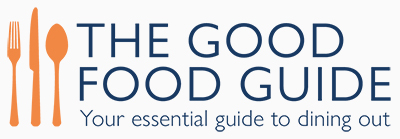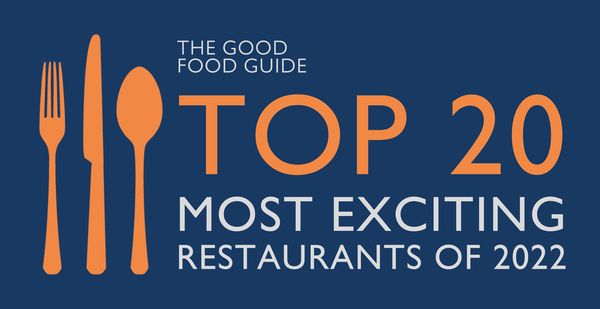On it’s first appearance in the 1982 Guide, we noted: ‘Some may enjoy the frisson of entering without a tie and leaving without being obliged to mortgage the suit they stand up in. Others, while enjoying the frisson of being watched eating by two blown-up photos of the absentee patrons, call the food ‘the gastronomic equivalent of China Rejects.’
But by 1983 Gavvers had received a ‘Best London Value for Dinner’ stamp of approval from the Guide, and was rated the most popular restaurant in London on the grounds that ‘the fixed-price menu formula is what people want and Albert Roux’s son has learned his craft at some of the best kitchen sinks.’
One of a several satellite Roux restaurants in London in the late 20th century – Le Poulbot, opened in 1969, Brasserie Benoît (later Le Gamin), 1971, Rouxl Britannia (an homage to sous-vide), 1986, Les Trois Plats, 1987 – Gavvers remained a stalwart of the Guide until 1994.
The Good Food Guide 1989
‘The newly revamped Gavvers is a reflection of the muted tones of the late 1980s. The quaint corner block with its horizontal white shuttering has been brought up to date by a discreet awning with white letters in fashionable designer grey. The inside is calming green with hessian grey walls and a chequered green carpet sporting a sharp geometric pattern. The atmosphere is classy, French and slightly chaotic compared to the more rustic air of the Rouxs’ new Les Trois Plats. Both are unashamed bastions of the Roux empire, in danger of being part and parcel of a monolithic chain. Both restaurants have been allocated a theme, for Gavvers it is modern, for Les Trois Plats it is farmhouse. Both kitchens have access to van-runs to Rungis market in Paris, good suppliers, patisserie factories and the clout of the imperial organisation. Compared to Les Trois Plats, the Gavvers menu is longer and more varied, and in the first few weeks more variable in quality, its emphasis on a more modern and light form. The determination here is almost to evoke the possibility of eating the crumbs from under the tables of Le Gavroche. First-class dishes have shone through delicate mousses an fine sauces, for instance a slightly gamey brown sauce bursting through with sweet garlic flavour for the duck with some whole roast cloves set on a potato and onion galette. It is not unusual for a Roux place to start off erratically – it happened at Les Trois Plats and le Mazarin*. The wine list covers about 40 bottles, showing all the predictable Chablis, Sancerre and Muscadet; and several minor clarets of which the Ch. Millet’82 is the best value at £17.95.’
*Chef-proprietor René Bajard was a former head chef at Le Gavroche






